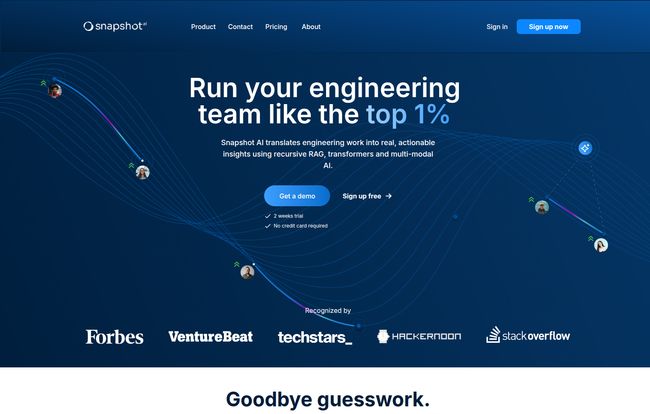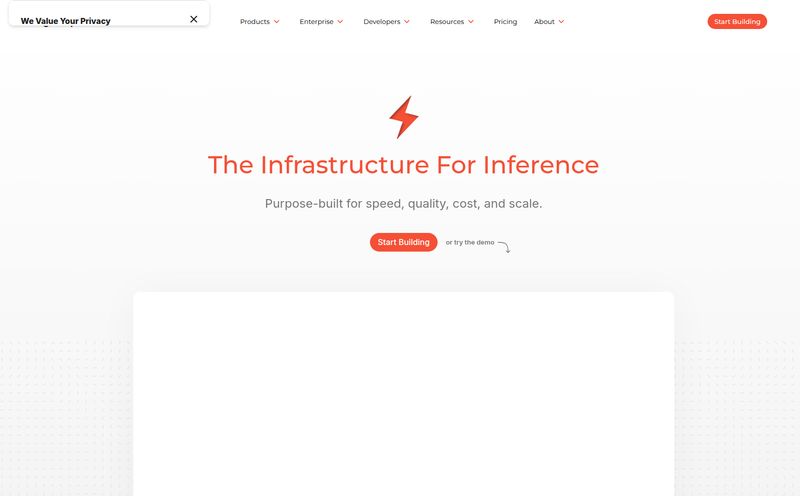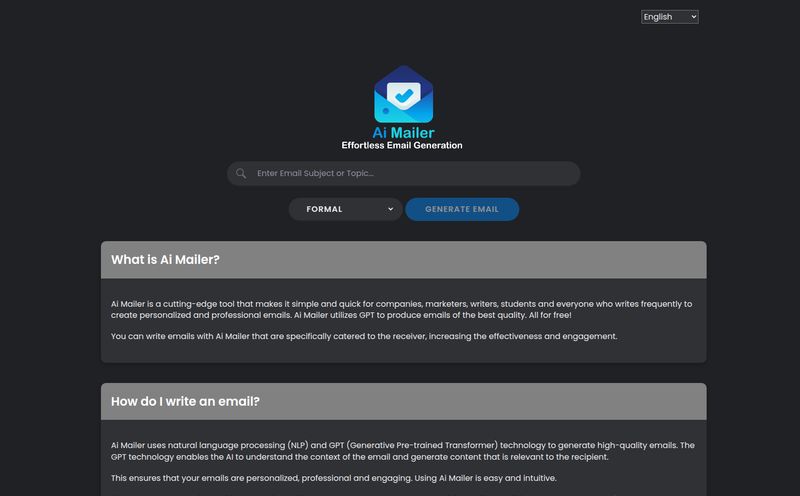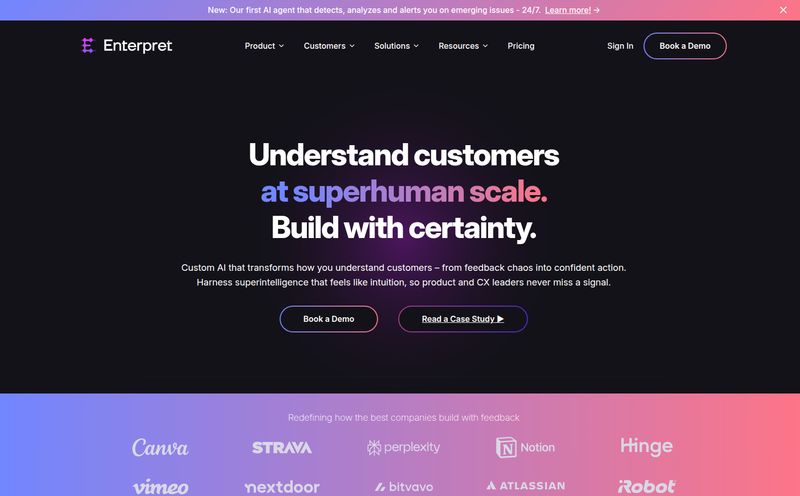Managing an engineering team can sometimes feel like trying to conduct a symphony in the dark. You hear the instruments, you know there’s a process, but you can’t always see who’s struggling, where the beautiful harmony is coming from, or why the brass section is suddenly a full measure behind. For years, we’ve relied on gut feelings, standup updates, and the occasional frantic Slack message. We've been told that's just the 'art' of management.
I've always been a bit skeptical of that. While there's certainly an art to leadership, operating without data is like flying blind. So when I see a new tool pop up, draped in the usual promises of “AI-powered insights” and “data-driven leadership,” my internal cynic sits up and pays attention. The latest on my radar? A platform called Snapshot AI (or Snapshot Reviews, they seem to use both). It claims to turn the daily chaos of commits, pull requests, and tickets into a clear, coherent story.
But does it actually work? Or is it just another pretty dashboard destined to be forgotten in a sea of browser tabs? I decided to take a closer look.
So What Exactly is Snapshot AI? (And Why Should You Care?)
First off, this isn't another Jira clone or a project management tool. Thank goodness. We have enough of those. Think of Snapshot as an intelligence layer that sits on top of the tools your team already uses—GitHub, GitLab, Jira, you name it. It watches all the activity—the code being written, the reviews being conducted, the tickets being resolved—and analyzes it.
It takes all that digital exhaust your team produces every single day and refines it into high-octane fuel for better decision-making. The goal isn't to micromanage; it's to gain visibility. It’s built for Engineering Executives, Managers, Startup Founders, and even Product Managers who are tired of asking “What’s the status?” and getting a shrug in response.
Instead of relying on proxies for progress (like lines of code, a truly terrible metric), it aims to show you the real picture: where are the bottlenecks? Is a junior developer silently stuck on a complex task? Is a critical project accumulating risk? That’s the promise.

Visit Snapshot AI
The Features That Actually Matter
A feature list is just a list. What I care about is what it does for me. After digging through their site and info, I’ve boiled it down to a few key capabilities that really stand out.
From Messy Changelogs to Clear Summaries
You know that pre-sprint-review scramble to figure out what everyone actually accomplished? Snapshot automates this. Using what they describe as “multi-modal AI,” it generates simple summaries of engineering changes. This is huge. It means less time spent by your engineers writing up summaries and more time for you to understand the impact of their work. It’s like having a translator who speaks both deep-technical and management-summary fluently.
Seeing Trouble Before It Starts
This is where things get interesting. The platform boasts predictive analytics for risk detection. By analyzing patterns, it can flag when a particular part of the code is becoming overly complex, when PRs are getting stalled, or when a certain feature is generating an unusual number of bugs. In my experience, this is the holy grail. It’s the difference between reacting to a fire and seeing the smoke signals weeks in advance. It allows you to be a coach, not a firefighter, offering support before a small issue becomes a full-blown crisis.
Finally, Real Answers to 'How Are We Doing?'
The conversation around engineering productivity is finally moving past toxic metrics. We're in the era of DORA metrics—things that measure the health and speed of your delivery pipeline. Snapshot taps right into this. It provides real-time analysis of commits, PRs, and reviews, giving you tangible impact metrics. You can start answering questions like: “Is our review process getting faster or slower?” and “What’s the real cycle time from idea to deployment?” with actual data.
The Numbers Don't Lie... Or Do They?
The Snapshot homepage throws some impressive stats at you:
- 31% faster PR reviews
- 22% fewer reopened tickets
- 43% faster detection of bottlenecks
They’re upfront that this is a weighted average from clients in Q1 2024, which I appreciate. Now, any good SEO or marketer knows to take vendor-supplied stats with a grain of salt. But these numbers feel plausible. Faster PR reviews happen when reviewers have better context, which the AI summaries provide. Fewer reopened tickets happen when the initial fix is better understood and reviewed, which is a direct result of identifying knowledge gaps. These aren't magic; they're the logical outcome of shedding light on the development process.
Of course, there's the old adage: Garbage In, Garbage Out. The effectiveness of a tool like this is directly tied to the quality of your team's engineering practices. If your commit messages are useless and your PR descriptions are empty, the AI won't have much to work with. It's an amplifier, not a creator.
Let's Talk Money: The Snapshot AI Pricing Breakdown
Okay, the part everyone scrolls down for. How much does this cost? I was actually pleasantly surprised by the transparency. Their pricing is straightforward and, frankly, very competitive.
| Plan | Price | Best For |
|---|---|---|
| Free | $0 | Small teams or those wanting to try the core insights. The site says both "Free Forever" and "Free trial for 30 days," so my guess is the core insights are free, with a trial of premium features. |
| Standard | $11 per seat/month | Mid-sized teams ready to get serious about data-informed leadership. |
| Enterprise | Contact Us | Large organizations with custom security, support, and integration needs. |
That $11 per seat price point for the Standard plan is aggressive. Competitors in the engineering intelligence space can easily run 3x, 4x, or even more than that. The fact that there's a genuinely useful free tier makes it a no-brainer to at least poke around and see what it tells you about your own team.
The Not-So-Shiny Parts: A Few Caveats
No tool is perfect, and it would be dishonest to pretend otherwise. Based on teh provided information and my experience with similar platforms, here are a few things to keep in mind.
First, it requires integration with your existing dev tools. This isn't really a 'con' so much as a reality—it’s how it gets its data. But it does mean there’s an initial setup phase. It's not just plug-and-play in 5 seconds. You'll need to authorize access to your code repos and project management systems.
Second, there's probably a learning curve. A powerful tool provides powerful data, but you have to learn how to interpret it and what questions to ask. It won't magically solve your problems. It gives you clues, and it's up to you, the leader, to use those clues to start conversations and make changes.
My Final Verdict: Is Snapshot AI Worth It?
After looking it all over, I’m genuinely optimistic. Is Snapshot AI a magic bullet that will instantly fix a dysfunctional team culture? Absolutely not. But that’s not what it’s for.
It's a tool for good leaders who want to be great. It provides the objective data needed to complement your intuition. It helps you back up your hunches, spot problems you didn't even know you had, and, most importantly, have more informed, empathetic conversations with your developers. It’s about replacing “I feel like we’re slowing down” with “I see our PR cycle time has increased by 15%—let's talk about what might be causing that.”
Remember that black box we started with? Snapshot AI doesn’t eliminate it, but it installs a pretty big window. And for the price—especially with a free tier—it’s absolutely worth a look. It might just be the tool that helps you finally turn that chaotic noise into a beautiful symphony.
Frequently Asked Questions about Snapshot AI
Is there a free trial for Snapshot AI?
Yes, and then some. They offer a free trial for up to 5 users to test out the premium features, but they also have a “Free Forever” plan that provides their core world-class engineering insights, which is a great way to get started without any commitment.
What exactly is a 'product seat' in the pricing?
A 'product seat' typically refers to one user account on the platform. For the Standard plan at $11/month, you would pay for each engineering manager, team lead, or executive who needs access to the Snapshot AI dashboard and insights.
Are all the advanced AI features included in the free plan?
It's likely that the free plan includes the core insights and summaries, while the more advanced predictive analytics and custom reporting features are reserved for the Standard and Enterprise tiers. The free trial is the best way to determine which features you'd be getting.
How secure is my team's code and data?
This is a critical question for any tool analyzing proprietary code. The Snapshot site emphasizes that data is “private, secure, and confidential.” For specific compliance or security details, especially for larger organizations, you would want to engage with their team directly through the Enterprise plan.
What tools does Snapshot AI integrate with?
The platform is designed to work with your team's “everyday tools.” This almost certainly includes major platforms like GitHub, GitLab, Bitbucket for code repositories, and Jira for project management. For specific or less common tools, you’d need to check their integration documentation.
Can this tool replace our daily standups?
No, and it shouldn't. It's a supplement, not a replacement. Instead of using standup time for dry status reports, you can use the insights from Snapshot to facilitate deeper conversations about roadblocks and collaborative problem-solving, making your meetings infinitely more valuable.
Reference and Sources
- Snapshot AI Official Website
- Snapshot AI Pricing Page
- DORA Metrics Overview - For context on modern engineering performance measurement.



